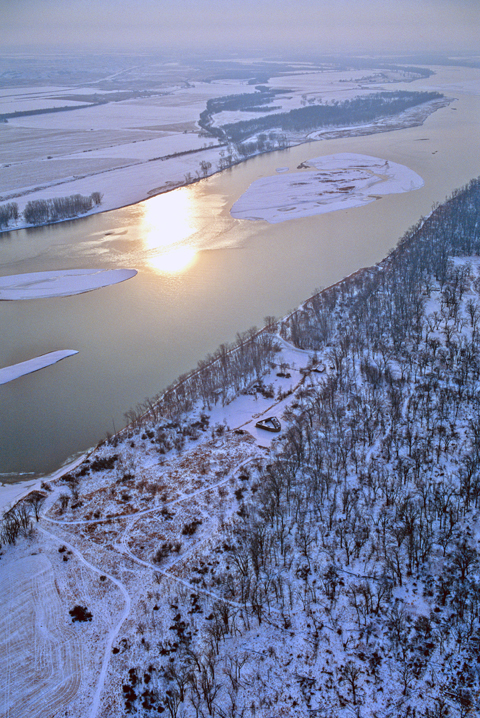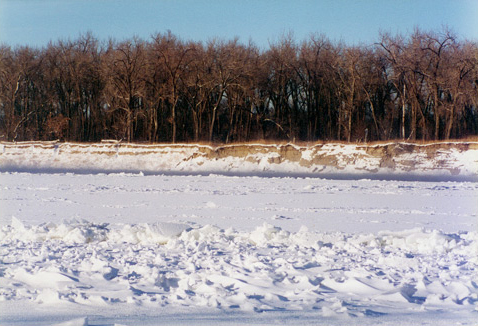The captains ordered work to begin on the Corps of Discovery’s winter fortification on 2 November 1804; they completed it on 27 November 1804. The mens’ quarters, the storage rooms, and the 16-foot pickets front and back, were designed for defense against hostile Indians, especially the Sioux, who were quite troublesome that winter, although they never attacked the fort. “This place we have named Fort Mandan,” Lewis recorded, “in honour of our Neighbours”—their kind and congenial Mandan Indians. Here they celebrated their second Christmas and New Year’s (see Holidays on the Trail).
On 28 February 1805, sixteen men were assigned to hew six canoes from cottonwood logs, finishing them in 22 days. Meanwhile, the rest of the men made rope, made leather clothing and moccasins, cured meat, made battle axes to trade for corn, and prepared botanical, zoological, and mineralogical for shipping back to Jefferson. Clark worked on his Fort Clatsop maps.
“All the party in high Spirits,” Clark wrote approvingly, “but fiew nights pass without a Dance they are helth. except the—vn. [venereal]—which is common with the Indians and have been communicated to many of our party at this place— those favores bieng easy acquired. all Tranquile.”
At 4 p.m. on the 7 April 1805 the Corps of Discovery headed their six canoes and two pirogues up the Missouri toward the Rocky Mountain barrier. At the same moment Corporal Warfington and a small crew, accompanied by some Indians heading for a meeting with the President (see Too Né’s Delegation), headed downriver.
Although the “Little Ice Age” was steadily warming, winters in the northern latitudes still averaged several degrees colder in 1805 than they do now. Today the Missouri River infrequently freezes over solid anywhere, even in northwestern North Dakota. The winds are just as strong, however, sculpting graceful shapes of driven snow among the rumpled edges of an ice jam.
Clark, who accompanied the hunters on a nine-day, 30-mile round trip in early February, explained what it was like to travel on the frozen river. The second day out he broke through the ice and got his feet and legs wet—a very dangerous situation. The third day out, he complained, “walking on uneaven ice has blistered the bottom of my feat, and walking is painfull to me—”
Moreover, conditions on the river changed every few days:
The ice on the parts of the River which was verry rough, as I went down, was Smothe on my return, this is owing to the rise and fall of the water, which takes place every day or two, and Caused by partial thaws, and obstructions in the passage of the water thro the Ice, which frequently attaches itself to the bottom.— the water when riseing forses its way thro the cracks & air holes above the old ice, & in one night becoms a Smothe Surface of ice 4 to 6 Inchs thick,— the river falls & the ice Sink in places with the water and attaches itself to the bottom, and when it again rises to its former hite, frequently leavs a valley of Several feet to Supply with water to bring it on a leavel Surfice.
The Story
Joseph Gravelines
by Clay S. Jenkinson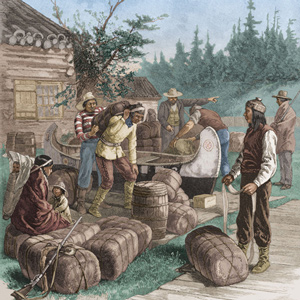

The Arikara-resident trader and interpreter Gravelines proved to be so reliable and so good at the immediate tasks put to him that long after the Lewis and Clark Expedition he was employed by the United States government to represent its interests among the Arikara.
Sacagawea
Articles and journal entries
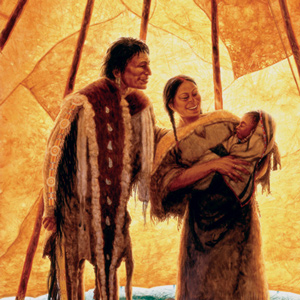

Speaking Hidatsa and Shoshone, she was an interpreter beyond value yet never on the payroll. Still, Sacagawea remains the third most famous member of the Lewis and Clark Expedition.


Reaching the mouth of the Knife River on 27 October 1804, the expedition arrived in the midst of a major agricultural center and marketplace for a huge mid-continental region. The five permanent earth lodge communities there offered a panorama of contemporary Indian life.
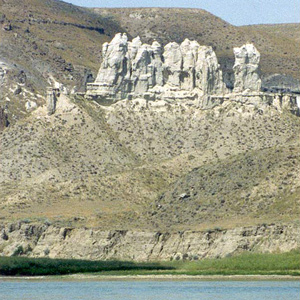

Near the mouth of the Knife, in late October 1804, the expedition settled down for the winter. After the river ice broke up, the keelboat left for St. Louis and six new dugout canoes headed the opposite direction, up the Missouri river.
November 2, 1804
Starting Fort Mandan
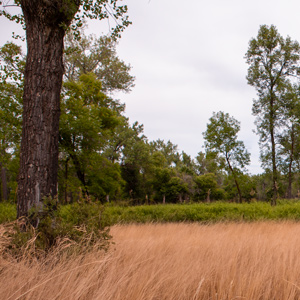

Ruptáre to Fort Mandan (North Dakota)
Lewis sets out to trade for corn, Clark picks a location for Fort Mandan, and the men begin felling trees. Arikara chief Too Né leaves with several Mandans.
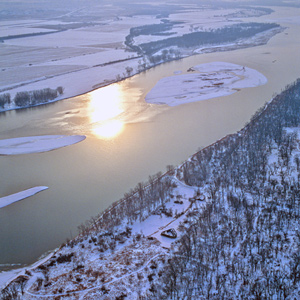

In January 1798, Thompson took celestial observations at the villages and determined them to be at a latitude of 47°17’22″N and a longitude of 101°14’24″W. Why then did Lewis and Clark think it necessary to take twenty-six observations?
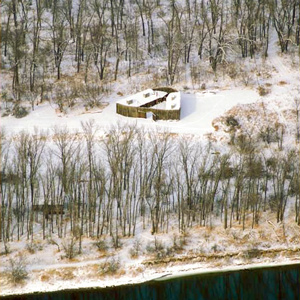

Lewis attested that his men were “in excellent health and sperits, zealously attached to the enterprise, and anxious to proceed; not a whisper of murmur or discontent to be heard among them, but all act in unison, and with the most perfect harmony.”
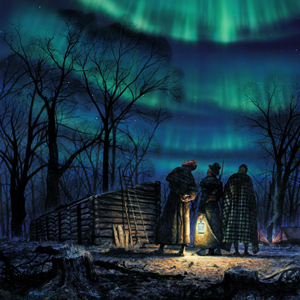

“Late at night we were awaked by the sergeant on guard to see the beautiful phenomenon called the northern light….” What did Meriwether Lewis and William Clark understand about the aurora borealis? Scientific theories of their time may sound a bit fanciful today.
November 11, 1804
Charbonneau's buffalo robes
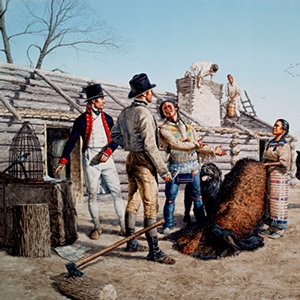

Fort Mandan, ND Toussaint Charbonneau and two Indian women bring buffalo robes. The enlisted men continue with construction, and Lewis calculates latitude.
November 12, 1804
Mandan history lesson
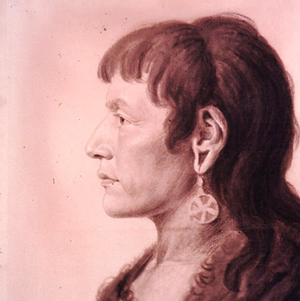

Fort Mandan, ND Sheheke (Big White), chief of the Mitutanka village, and his wife, likely Yellow Corn, visit Fort Mandan. She carries 100 pounds of meat and Sheheke tells the Mandan creation story.
November 13, 1804
Ice water and frostbite
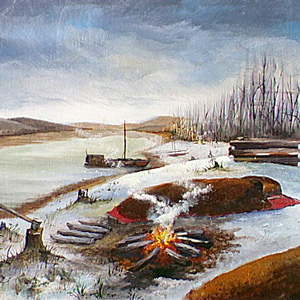

Fort Mandan, ND The day is cold and snowy. Lewis’s group gets into the icy water and tries to move a pirogue loaded with chimney stones across a sandbar. The barge must be unloaded, and an Assiniboine chief visits Clark.
November 25, 1804
Hidatsa diplomacy
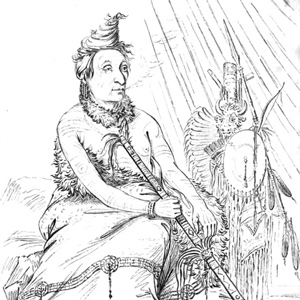

Fort Mandan, ND Lewis, both interpreters, and five men embark on a diplomatic mission to a Hidatsa village. Two Hidatsa chiefs come to Fort Mandan with similar intentions.
December 9, 1804
Bringing in the harvest
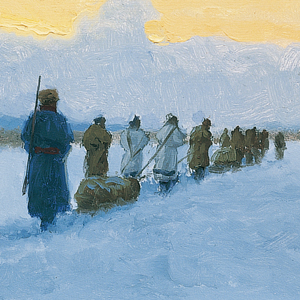

Fort Mandan, ND Lewis leads a party that will hunt and bring in buffalo meat from previous hunts. Four horses and a dog sled loaded with meat return. Lewis stays at the hunters’ camp about five miles from the fort.
December 18, 1804
Clark's Fort Mandan maps
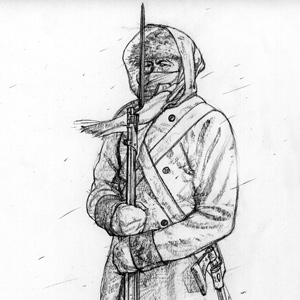

Fort Mandan, ND Three visiting fur traders leave the fort, and Clark updates his maps using the geographic information obtained from them. Due to the cold, guard duty is shortened, and a buffalo hunt is canceled.
December 25, 1804
Fort Mandan Christmas
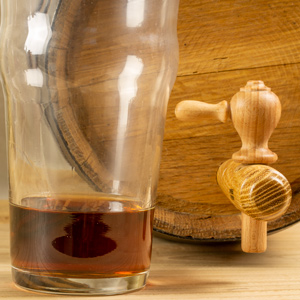

Fort Mandan, ND The men wake the captains by firing their guns and cannon. They celebrate Christmas with special food, rum, and dancing. Three Indian wives watch the men dance until 9 p.m. after which all is in “peace & quietness.”
January 1, 1805
A new year at Fort Mandan
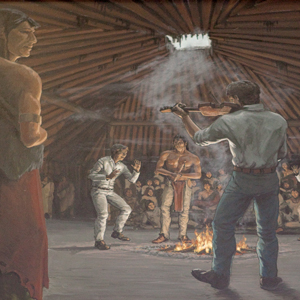

Fort Mandan, ND New Year’s day is celebrated with cannon fire and several men are allowed to visit a nearby Mandan village to celebrate and dance. Clark orders York to dance. The day is warm with rain but the night is cold and snowy.
January 29, 1805
Making charcoal
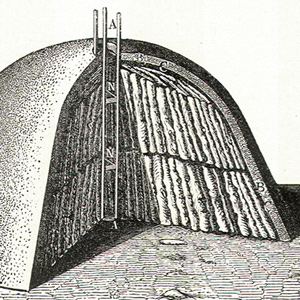

Fort Mandan, ND Lewis must substitute water with spirituous liquor to make a reflective surface for his sextant. The blacksmiths make war axes and others try to free the boats from the river ice.
February 11, 1805
Delivering baby Charbonneau
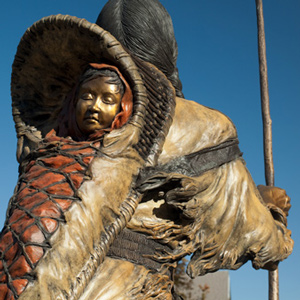

Fort Mandan, ND After a tedious and painful labor, Sacagawea gives birth to her first baby, Jean Baptiste Charbonneau. Clark, hunting about 40 miles to the south, heads back towards the fort.
February 16, 1805
Scorched earth
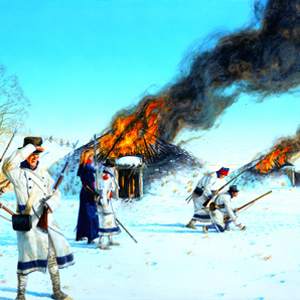

Fort Mandan, ND Lewis and his men continue their pursuit of a Sioux war party and come to an old Mandan village where the hunter’s cache of meat that has been pillaged and two lodges set afire.
February 23, 1805
Freeing the white pirogue
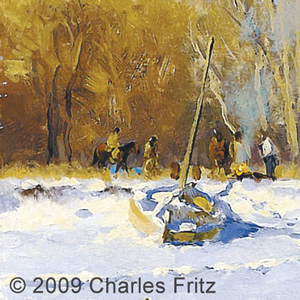

Fort Mandan, ND The men take advantage of the warm day to free the white pirogue from the ice that threatens to sink it. The Indian boy with amputated toes is taken home on a sled.
March 9, 1805
Grand Hidatsa Chief Le Borgne
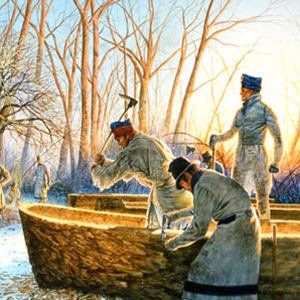

Fort Mandan, ND The Grand Chief of the Hidatsas pays his first visit to Fort Mandan. He is given gifts and Lewis demonstrates the air gun. York is the first black man ever seen by the chief.
March 25, 1805
The spring break-up
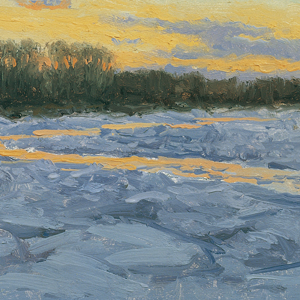

At Fort Mandan among the Knife River Indian Villages, the river ice begins breaking up, and the new canoes are endangered as they travel to the fort. Two men make a new steering oar for the barge.
April 3, 1805
Packing up Jefferson's things
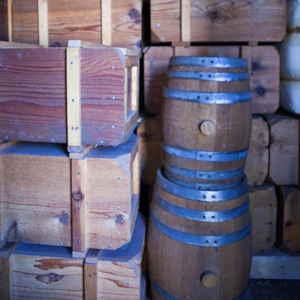

The men use the day to pack the animal, plant, and mineral specimens—and Indian artifacts—to be shipped from Fort Mandan. Two N.W. Company clerks ask for payment for two horses lost by the expedition.
Clark’s Fort Mandan Maps
by Joseph A. Mussulman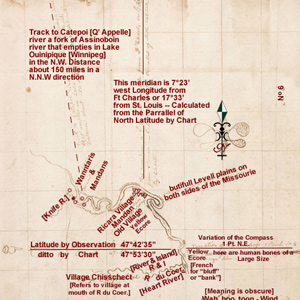

While wintering over at Fort Mandan, Clark made a series of maps based on Indian information and previous traders such as John Evans and François Larocque.
